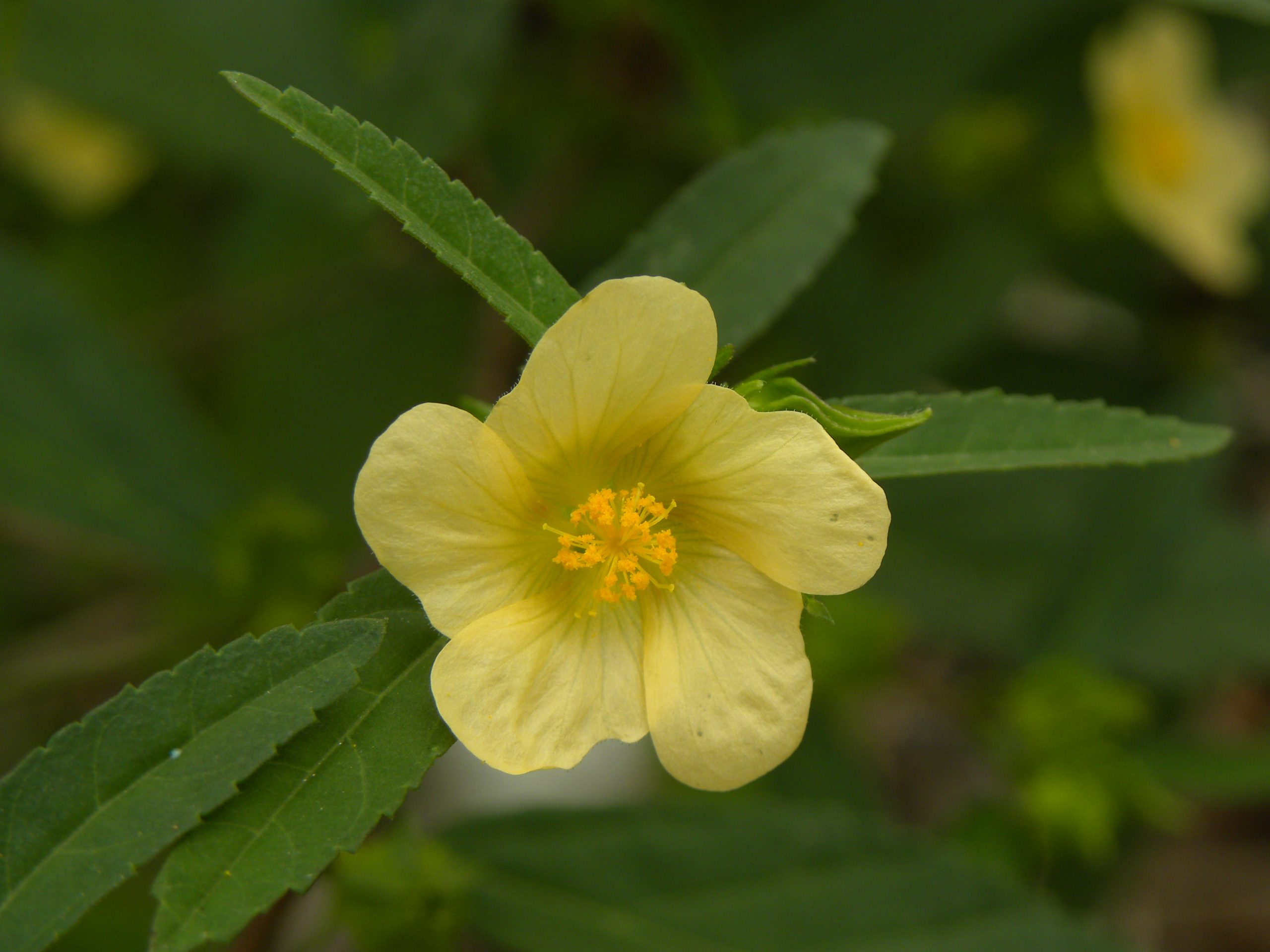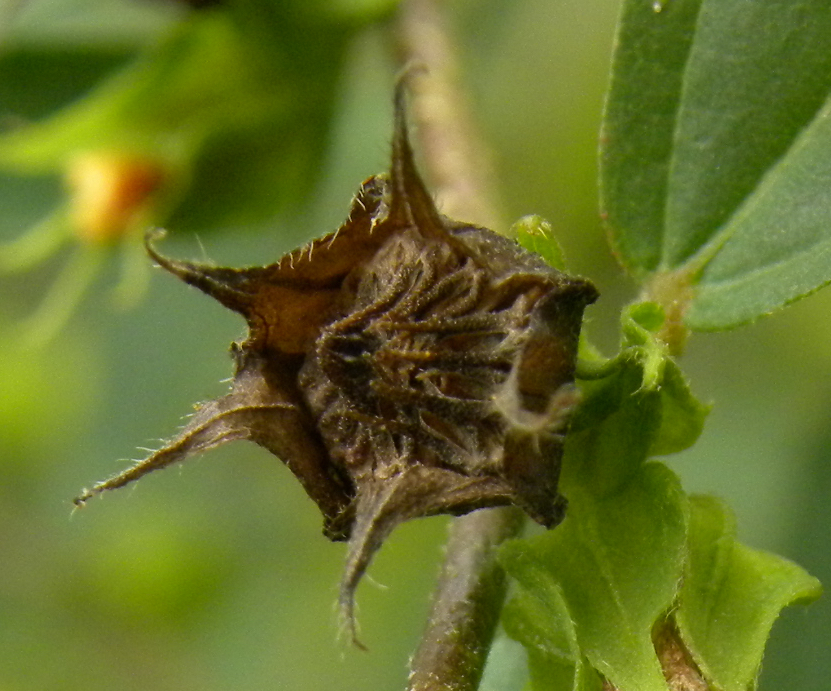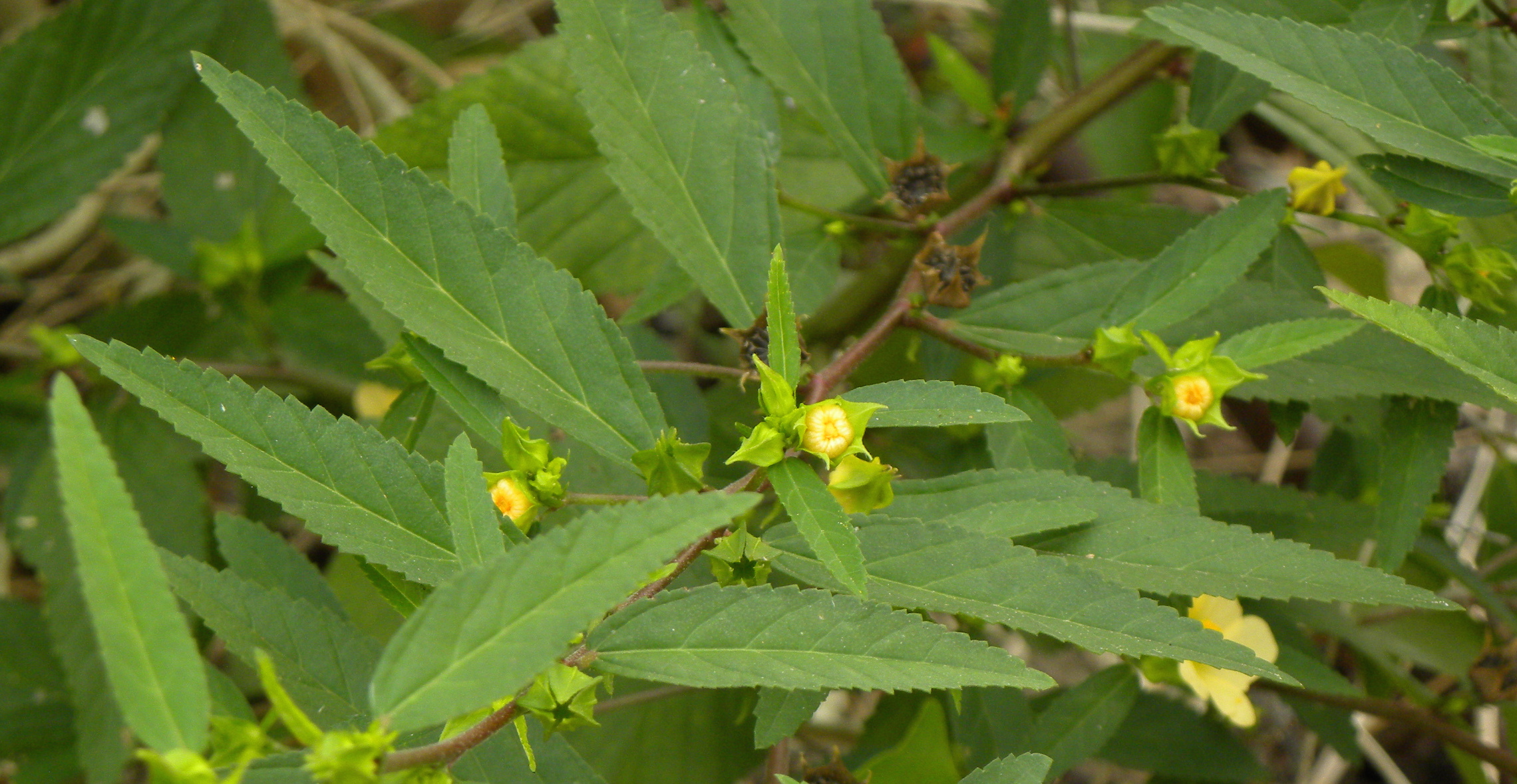Habit: Sida acuta grows as an annual/perennial herb to small shrub up to 1.5 m in height (usually lower and crawling). The glabrous or pubescent leaves are arranged alternately, lanceolate, to 5 cm in length, with an acute leaf apex, dentate/crenate margin. There are stipules. The vegetation has stellate pubescence.
The complete, perfect, actinomorphic flowers are solitary or in pairs in leaf axils. The calyx has 5 half fused pubescent green sepals. The corolla has 5 half fused white, to yellow orange petals. There are numerous stamens fused together around the style in a column. The ovary is superior with numerous locules and numerous seeds. The fruit is a numerous loculicidal capsule with each locule having apical spines
Habitat: Sida acuta grows in sandy Human Altered environments (yards, roadsides/abandoned fields).
Distribution: Sida acuta occurs on all island groupings in the Lucayan Archipelago and all tropical and subtropical regions or the world.
Medicinal/Cultural/Economic usage: Sida acuta is not known to be used medicinally in the Lucayan Archipelago. Elsewhere in the Caribbean it is used to treat injuries such as a sprained ankle.


